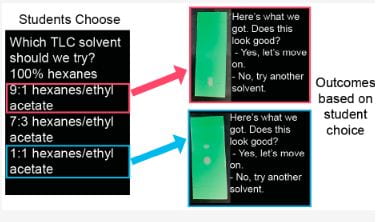Matthew Cheung, Department of Mathematics
There are two misconceptions about group work and collaborative learning that need to be addressed.
Group Work and Collaborative Learning May Not Always be Ideal
As a teaching assistant at UC Irvine, I question other teaching assistants why they implement group work or collaborative learning. I hear answers such as:
“Group work gets the students active. Active learning is good.”
If the reason for implementing group work is to make students active, I might as well send students to a physical education class for a workout to burn those calories instead. Consider these questions when trying to implement group work or collaborative learning.
- Will group work or collaborative learning help the students achieve the learning objectives? If these goals will not be achieved, why even implement it?
Asking this question is not enough. Goals such as understanding concepts may not be easily measurable. Student understanding comes in various degrees.
- Does group work/collaborative learning do a better job at helping students achieve their goals over other activities? If other teaching methods achieve goals more effectively, go with the other teaching methods.
The article “Deeper Thinking about Active Learning” by Maryellen Weimer questions this issue. “First, active learning isn’t about activity for the sake of activity… We’re still obsessed with collecting teaching techniques—all those strategies, gimmicks, approaches, and things we can do to get students engaged. But what kind of engagement does the activity promote?” As of now, many teachers focus solely on the need to implement a variety of group activities without thinking why they use them in the first place.
In the video by McGill University, an English teacher named Carolyn Samuel demonstrates effective use of collaborative learning in an active learning-based classroom. English writing involves sharing ideas and conducting peer-to-peer reviews. Students receive new viewpoints and writing styles from communicating with other students. In the end, the main takeaway is to discover the role of each activity in relation to the class’s goals and decide whether such activity is worth using.
Collaborative Learning is Not Always Better than Group Learning
In “Group vs. Collaborative Learning: Knowing the Difference Makes a Difference” by Jane A. Scheuermann, the article describes the difference between group learning and collaborative learning. This article along with many others regard group learning as inferior to collaborative learning. A big selling point is that group learning promotes “divide and conquer” type of work while collaborative learning promotes a more collective group effort.
Despite some hesitation with using group learning, there are times where I will implement group learning over collaborative learning. There are times where dividing and conquering is beneficial. An example is a project where there is a deep math, science, and art components and the group consists of math, science, and art majors. Each subject component is so deep that even if the art major tries to help the math major in the math component, the art major might not be able to contribute as much. The same goes for the other components. In this case, dividing and conquering works best. An example would be building a rocket. The engineer would build the rocket while the math member would calculate and code the rocket system while the art member would design logos or symbols for the rocket.
I hope in the future, group learning and collaborative learning are used more effectively, and there is a more positive outlook on group learning as well as collaborative learning.
References
Matthew Mahavongtrakul edited this post on December 2nd, 2019.

